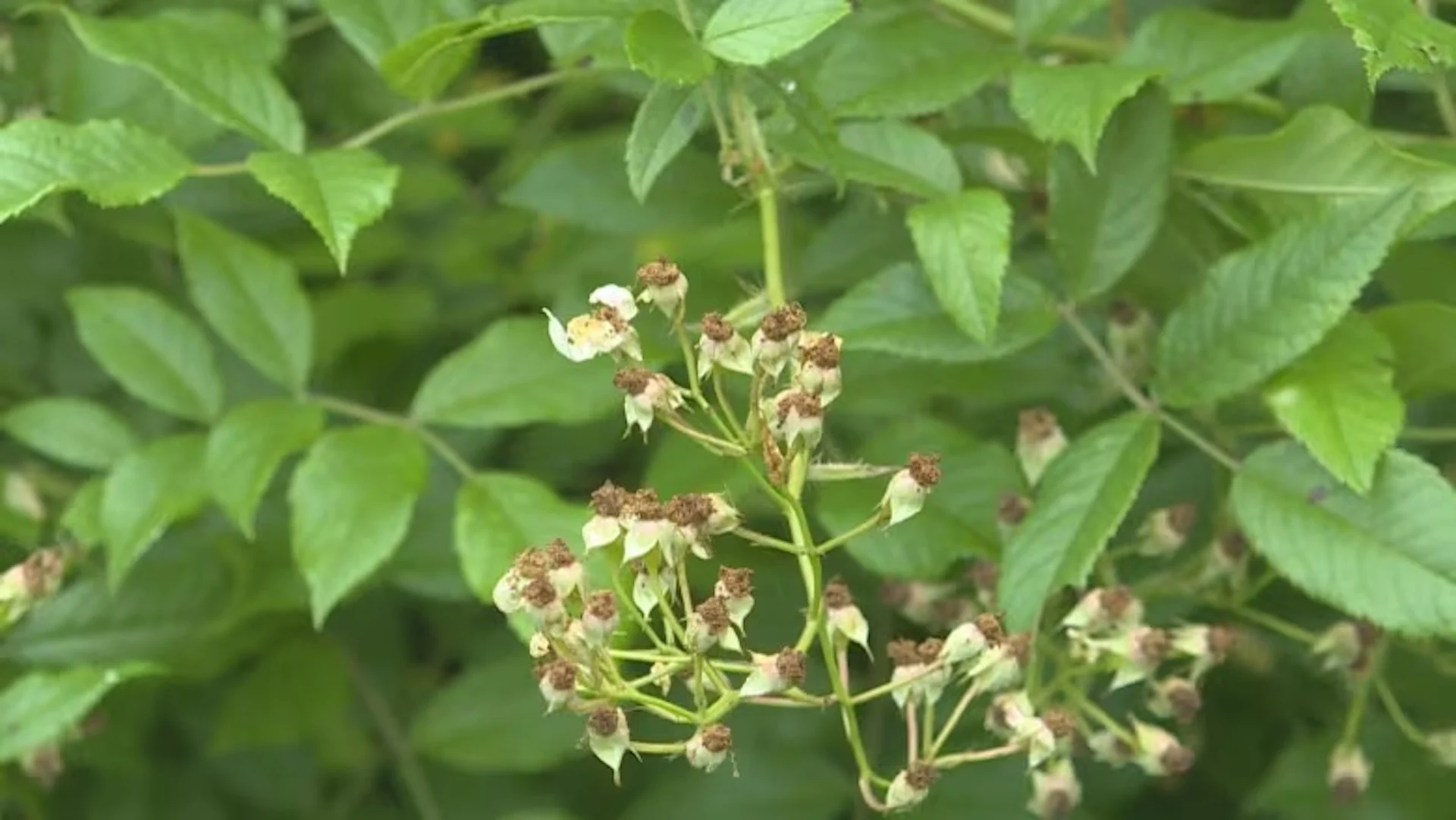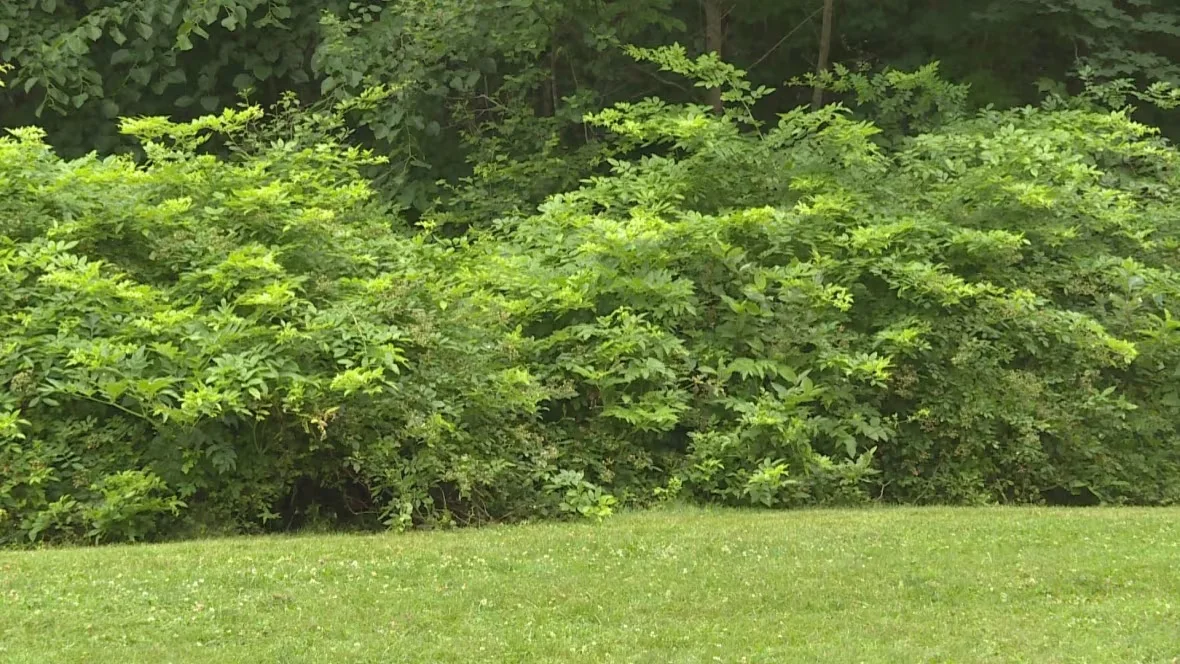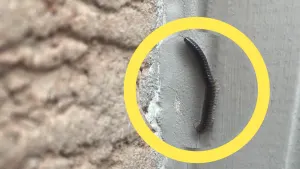
New Brunswick invasive species council raises alarm over harmful rose
The New Brunswick Invasive Species Council is raising awareness about a rose species that's harming native trees and plants in the province.
Kristin Elton, executive director of the council, told CBC Radio's Shift that multiflora rose bushes will grow onto other species and nearby vegetation, suffocating them and competing with them for resources.
"That's where we see the issues," she said. "It has these really tall canning structures that kind of come up and fountain out and over. When there is something for it to grow on, it can grow up to six metres tall."
And while the plant isn't new to the province, it has become more prevalent over the last couple of years, including in Fredericton's Odell Park.
SEE ALSO: Goats are helping Niagara Parks mow down a big problem
Warming temperatures might be the reason this rose has been able to thrive in recent years, Elton said.
"Our last couple of springs haven't been normal, so it could be that it's taking advantage of that," she said.
Invasive species tend to "leaf out" earlier in the year, which gives them a head start against other plants.

Kristin Elton, executive director of the New Brunswick Invasive Species Council, tells the CBC's Danielle McCreadie how mulitfloral rose bushes are disrupting native species. (Lars Schwartz/CBC News)
"It's like letting them start a race a couple of weeks earlier than native species," said Elton.
The multiflora rose has sharp curved thorns throughout its bushes, which also poses a safety hazard, she said.
"If you're trying to deal with a species like this, it is quite difficult to get around it," said Elton.
The rose bushes have distinguishing fringe pieces between the leaf and stem, which is how to identify this species when it is not in bloom.
Between May and June, it produces an abundance of small white and pink flowers. Elton said the flowers are very attractive to birds and other wildlife.
WATCH:Hogweed has some lookalikes; How to identify these dangerous plants
"Animals will pick them up and they either eat them or they carry them away to other places and they throw them out or decide to bury them. They'll get stuck to an animal, and then when they fall off they have the potential to spread and start a new tree," said Elton.
It's likely that these bushes were purposely planted in Odell Park, she said, but it's also possible they were brought here by wildlife.
The multiflora rose is native to eastern Asia and was introduced to North America in the 1700s and 1800s as root stock for other rose species.
"In the 1930s, it really started being promoted as a species to create natural fencing, as erosion control," said Elton. "People would have planted it before realizing it would cause problems."

Elton said the invasive species can grow up to six metres tall if it has something to climb. Pictured is a large multiflora rose bush in Odell Park in Fredericton. (Lars Schwartz/CBC News)
There are other rose species native to the province that can provide a similar appearance and structure without causing harm to other vegetation, Elton said. The Virginia rose and white meadowsweet are both safe alternatives.
The council has launched a new outreach program called Plant Wise that's accessible through the council's website.
"It tells you what plants you can put in your garden, which ones are native, making sure you're doing best practices when it comes to transporting anything," said Elton.
Thumbnail courtesy of Lars Schwartz/CBC News.
The story was originally written by and published for CBC News. It contains files from Shift.










